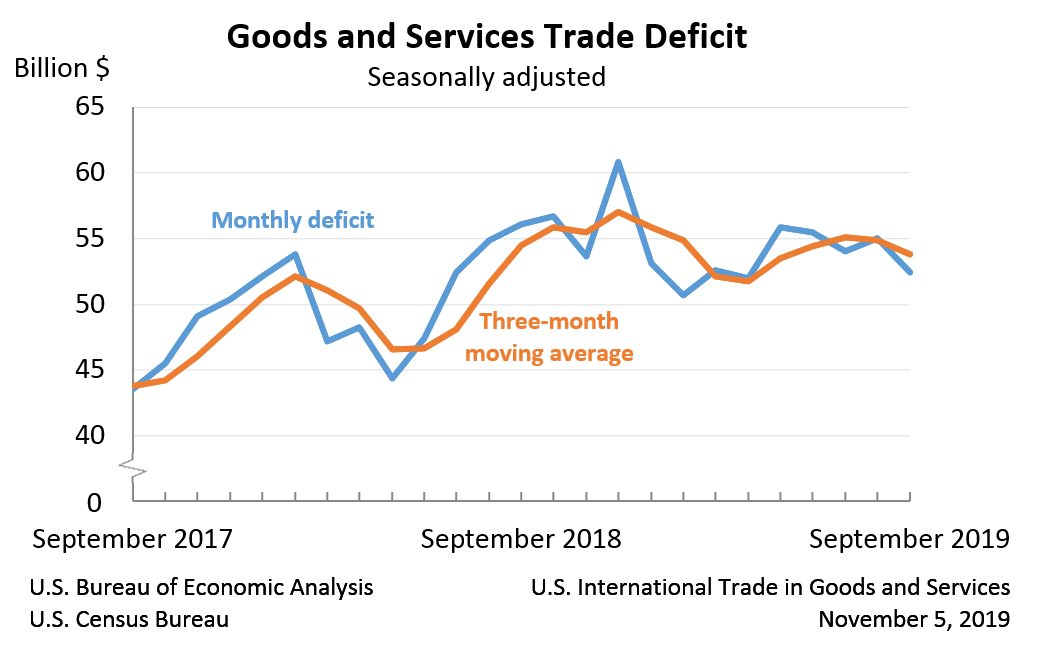
Does inflation arise from the demand side of the goods, factor and asset markets or from the supply side or from some combination of the two—the so-called mixed inflation. Many economists have come to believe that the actual process of inflation is neither due to demand-pull alone, nor due to cost-push alone, but due to a combination of both the elements of demand-pull and cost-push—called mixed inflation. While these are the main three causes of demand-pull inflation, it can also be triggered by things like government spending, an increase in printing money, or asset inflation when a currency is undervalued. When the economy is doing well, demand for goods and services usually goes up because people have more money to spend. This is a result of more people being employed or a competitive job market that has driven salaries up for many. Consumers also tend to spend more money when they aren’t worried about the status of their job.
Cost-Push and Demand-Pull Inflation: Definitions and Examples – Nasdaq
Cost-Push and Demand-Pull Inflation: Definitions and Examples.
Posted: Tue, 29 Jun 2021 07:00:00 GMT [source]
It would also increase investment spending by firms and businesses. In demand pull inflation, Aggregate Demand D is rising too fast, so these contractionary policies would lower the rise, meaning inflation would still occur but at a lower rate. In his model of inflation excess demand comes into being as a result of autonomous increase in expenditure on investment or consumption, that is, the increase in aggregate expenditure or demand occurs independent of any increase in the supply of money. On the other hand, monetarists explain the emergence of excess demand and the resultant rise in prices on account of the increase in money supply in the economy. To quote Friedman, “Inflation is always and everywhere a monetary phenomenon……. And can be produced only by a more rapid increase in the quantity of money than in output.
In modern income theory, however, demand-pull is interpreted to mean an excess of aggregate money demand relative to the economy’s full employment output level. The theory assumes that prices for goods and services as well as for economic resources are responsive to supply and demand forces, and will, thus, moves readily upward under the pressure of a high level of aggregate demand. Many supply shocks have contributed to cost-push inflation since the 1970s. The sharp rise in oil prices has increased the cost of production and transportation of every product in the oil-importing countries. Inflation that happened due to the rise in global oil prices in 2022 has significantly impacted the cost of production for many businesses. Therefore, companies have to raise their prices to keep up with the rising costs of materials and labor, increasing overall consumer prices.
In Keynesian theory, increased employment results in increased aggregate demand (AD), which leads to further hiring by firms to increase output. Due to capacity constraints, this increase in diagram of demand pull inflation output will eventually become so small that the price of the good will rise. At first, unemployment will go down, shifting AD1 to AD2, which increases demand (noted as “Y”) by (Y2 − Y1).
Demand-Pull Inflation: Definition & Causes
The price level at which each possible level of output will be supplied increases proportionally with the increase in the money wage rate. With aggregate demand of D0, the result of the higher money wage rate and the resultant upward shift in SS function from S0S to S1S is a rise in the price level from P0 to P1 and a fall in the output level from Y0 to Y1 (which results in unemployment). When interest rates rise to a high enough level, the demand for money will become totally inelastic with respect to the rate of interest. At this point there are no more speculative balances to be had, attempts to borrow funds either will be frustrated or, because of the resultant increase in interest rates, will cause the abandonment of other ventures. But since he aggregate supply curves is yet sloping upward, increase in aggregate demand from AD2, to AD3 has -used the increase in output from OY2 to OYF.
What Is Demand-Pull Inflation? – Investopedia
What Is Demand-Pull Inflation?.
Posted: Sat, 25 Mar 2017 22:42:18 GMT [source]
To increase aggregate supply, taxes can be decreased and central banks can implement contractionary monetary policies, achieved by increasing interest rates. Looking again at the price-quantity graph, we can see the relationship between aggregate supply and demand. If aggregate demand increases from AD1 to AD2, in the short run, this will not change aggregate supply. Instead, it will cause a change in the quantity supplied, represented by a movement along the AS curve.
Top 3 Theories of Inflation (With Diagram)
This will lead to the increase in aggregate demand (C +1 + G). If aggregate supply of output does not increase or increases by a relatively less amount in the short run, this will cause demand-pull inflation in the economy, that is, general rise in price level from one period to another. If, for example, in a situation of full employment, the government expenditure or private investment goes up, this is bound to generate inflationary pressures in the economy.
- No income level lower than Y0 is a full-employment one, and increases in demand beyond D0, to D1 and D2 raise the price level from P0 to P1 and P2.
- Most other businesses experience similar growing demands and raise their prices.
- His notion of the inflationary gap which he put forward in his booklet represented excess of aggregate demand over full-employment output.
- If the government is insistent on securing additional resources, it will get them in one way or another—by issuing currency or by borrowing from the central bank or from commercial banks.
The solution, as always, was to borrow more money and print more money. This cycle of higher prices leading to higher wage demands also leads to increased inflationary expectations, and thereby persistent inflation. This process is explained in my article about the Non-Accelerating Inflation Rate of Unemployment.
Demand-Pull Inflation Graph
Demand-pull inflation refers to a rise in prices when the demand for products increases more than their supply. Rapid overseas growth can also ignite an increase in demand as more exports are consumed by foreigners. Finally, if a government reduces taxes, households are left with more disposable income in their pockets. This, in turn, leads to an increase in consumer confidence that spurs consumer spending. In Keynesian economics, an increase in aggregate demand is caused by a rise in employment, as companies need to hire more people to increase their output. Cost-push inflation means prices have been “pushed up” by increases in the costs of any of the four factors of production—labor, capital, land, or entrepreneurship—when companies are already running at full production capacity.

In the example above, when the money supply doubles from $ 3000 to $ 6000, the price level doubles from $ 6 to $ 12. If this equation V and T remain constant, then there is a directly proportional relationship between the money supply (M) and the price level (P). This approach (Demand Pull Inflation) points out the prices of goods and services rise as demand increases relative to supply. Government policies that boost productivity and supply can also help ease inflation pressure. For example, infrastructure, education, and technology investments can help improve the economy’s ability to produce goods and services while reducing the stress of inflation.
Demand Pull Inflation Economics
Unfortunately, this link is broken with a fractional reserve system and unresponsive interest rate policy from the Fed. Additionally, existing workers will be paid overtime rates to work extra hours, as well as weekend work or night-shift work. However, not all of the extra demand will be satisfied, and the competition to buy goods will bid prices up from P to P’.
The result is that the pressure of demand is such that it cannot be met by the currently available supply of output. In an Aggregate Demand and Aggregate Supply diagram, an increase in the aggregate demand curve leads to an increase in the rate of inflation, i.e., when the aggregate demand for goods and services is greater than the aggregate supply. Demand Pull Inflation is defined as an increase in the rate of inflation caused by the Aggregate Demand curve.
The rationale behind this increase is, for companies to maintain or increase profit margins, they will need to raise the retail price paid by consumers, thereby causing inflation. The theory of cost-push inflation became popular during and after the Second World War. This theory maintains that prices instead of being pulled-up by excess demand are also pushed-up as a result of a rise in the cost of production.
Demand-pull inflation is a crucial concept to understand regarding economic trends. Businesses must be aware of this trend and how it can affect their bottom line. For a business to stay competitive and make money, it is essential to take proactive measures such as adjusting prices or changing production methods. These measures can help a company keep going during inflation. It is important to note that both the original quantity theorists and the modern monetarists, prominent among who is Milton Friedman, also explain inflation in terms of excess demand for goods and services.
As demand for their product increases, Widgetized needs to increase production. To do this, they need to hire more employees and buy more raw materials. The new employees need to be trained, and the company might pay more than their normal cost in order to get the number of materials they need for widget production. All of these things increase pricing and the potential to trigger other demand-pull inflationary pressures. When the inflation rate rises then demand goods and services usually rises as well because people want to protect their money by buying goods while they are still affordable. Cost-push inflation refers to prices rising due to increased production costs.
Importance of Demand Forecasting
This theory shows that when supply is stable, commodity prices rise. Once the economy reaches full employment, the manufacturer fails to increase production further. But in this case, the price level rises as demand continues to expand.

As a result of this excess demand, prices will rise and excess demand inflation or demand-pull inflation comes to exist. But demand-pull inflation may also be caused without an increase in money supply—when MEC or MPC goes up causing an increase in expenditures and hence prices. Since inflation is due to excess demand, it is considered controllable by the demand reducing monetary and fiscal policies. Figure 32.7 shows that according to pure supply (cost-push) inflation theorists—in societies of oligopolies, unions and other pressure groups the aggregate supply curve moves upwards from S0 to .S1to S2 whatever may happen to aggregate demand. A usual characteristic of such markets is that the money wage rate is inflexible downward, the result of which is an aggregate supply curve of the kind shown by S0S. With the initial SoS and D0 curves in the Figure 32.7, we can turn to the process by which increases in the money wage rate push up the price level.
In the 1960s, the quantity theory of money was presented in a more advanced form. He is a professor at the University of Chicago in the United States. He was also the recipient of the 1976 Nobel Prize in Economics. Milton Friedman’s view was that there was a constant demand for money. Accordingly, he was of the opinion that inflation is a financial phenomenon at all times and everywhere.

